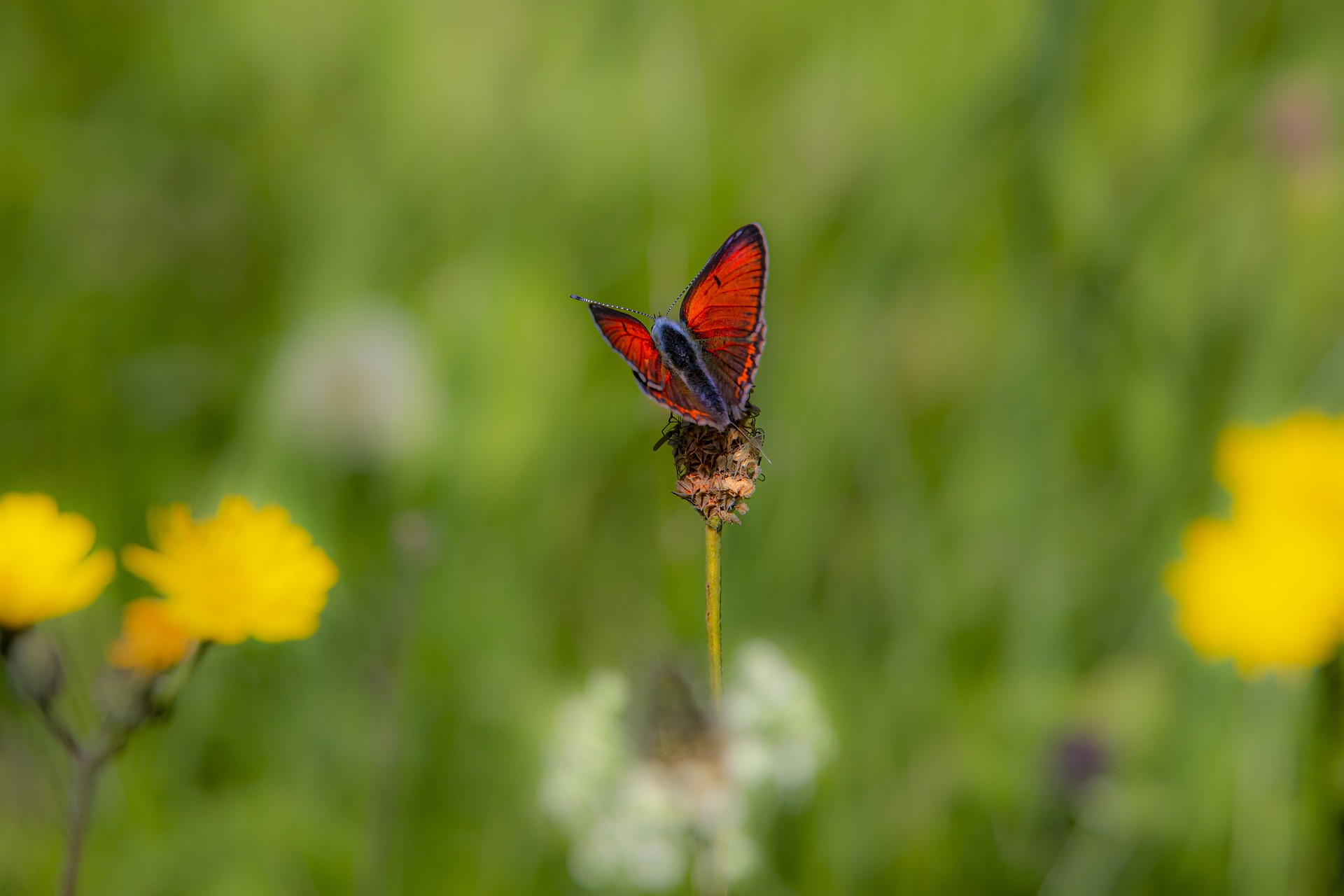The Purple-edged Copper (Lycaena hippothoe) is a butterfly species belonging to the family Lycaenidae. Here are some key features and characteristics of the Purple-edged Copper:
- Appearance: The Purple-edged Copper is a small to medium-sized butterfly with wingspan typically ranging from 28 to 36 millimeters (about 1.1 to 1.4 inches). It has vibrant orange wings with a distinctive purple iridescence along the edges, giving it its name. The undersides of the wings are usually lighter in color with black spots and markings, providing camouflage when the butterfly rests.
- Distribution: The Purple-edged Copper is found in various parts of Europe and Asia, including countries such as the United Kingdom, France, Germany, Scandinavia, Russia, China, and Japan. It inhabits a range of grassland habitats, including meadows, heathlands, and scrublands.
- Lifecycle: Like other butterflies, the Purple-edged Copper undergoes complete metamorphosis, progressing through egg, larva (caterpillar), pupa (chrysalis), and adult stages. The caterpillars feed on various species of grasses, particularly fescues (Festuca species) and sheep’s fescue (Festuca ovina). Adults feed on nectar from a variety of flowers, including thistles, knapweeds, and scabious.
- Behavior: Purple-edged Coppers are typically active during the day and can be seen flying low over grasslands, especially on sunny days. They are known for their erratic flight pattern and may occasionally bask in the sun with their wings open. Males may patrol territories and engage in aerial courtship displays to attract females.
- Conservation: While the Purple-edged Copper is not considered globally threatened, local populations may face threats from habitat loss, habitat fragmentation, agricultural intensification, and climate change. Conservation efforts focus on preserving and restoring grassland habitats, promoting sustainable land management practices, and raising awareness about the importance of butterflies and their ecosystems.
Overall, the Purple-edged Copper is a beautiful and ecologically important butterfly species, valued for its colorful appearance and role in pollination within grassland habitats across its range.
Visited 198 times, 23 visit(s) today
Views: 350
Subscribe to the newsletter:
